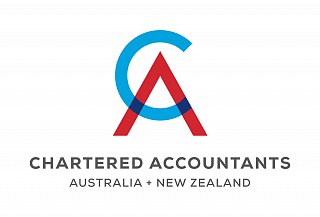Blogs

Have You Thought About the Small Business Pool Write-off? - 20th January 2016
The temporary $20,000 immediate write-off for "small business entities" attracts regular queries, even though it has been many months since the initiative was first announced with the Federal Budget early last year.
While most inquiries relate to claiming the immediate deduction, there has also been confusion about the rules in claiming general small business pool balances that are below $20,000 at year end.
The measure is particularly relevant for those small businesses that:
- have made a choice to apply the simplified depreciation rules during the 2014-15 income year, or
- have previously made that choice and had an opening pool balance as at July 1, 2014.
How does the general small business pool work?
Before the introduction of these measures with the last Federal Budget in May, "small business entities" (aggregated turnover of less than $2 million) could allocate depreciating assets that cost $1,000 or more to their general small business pool and claim a deduction at a rate of 15% in the year they are allocated, and 30% in subsequent income years.
A depreciating asset is an asset that is expected to decline in value - for example, a coffee machine used in a cafe.
From the 2015 budget night, depreciating assets that cost $20,000 or more need to be allocated to a small business entity's general small business pool and deducted at those specified rates. Assets costing less than $20,000 can be written off immediately in the year that the asset is used or installed ready to use.
The previous rules, the new rules
Before budget night, small business entities were able to claim a deduction for the entire balance of their general small business pool if the pool balance was less than $1,000 at the end of the income year.
With the new threshold, if the balance of a general small business pool is less than $20,000 at the end of an income year, the small business entity can claim a deduction for the entire balance of the pool.
This measure is however temporary, as is the $20,000 immediate write-off for asset purchases. A deduction for the pool balance may be claimed if it is less than $20,000 at the end of the income years ending June 30, 2015, 2016 or 2017. After June 30, 2017 the threshold reverts from $20,000 to $1,000.
Determining pool balance for the $20,000 write-off
The entire pool balance can be written-off if the balance at year end is less than $20,000. However the pool balance is not the "closing pool balance"; instead a special calculation applies in working this sum out.
In very simple terms, the balance is:
- the opening pool balance
- plus the cost of any additions to the pool (adjusted for any private use)
- plus the cost of any modifications, and update to or moving of, existing assets in the pool (adjusted for any private use)
- less the consideration received from the disposal of any pool assets.
If this calculation results in a balance less than $20,000 at the end of the relevant income year, that balance can be written off, thereby reducing the closing balance of the pool for that income year to zero.
This calculation can be complex, so please contact this office is you require some assistance.
Tips for claiming the pool balance
When claiming a deduction for the entire low value pool balance, the following should be noted:
It is not necessary to calculate the pool deduction in the usual way if the small business entity is eligible to write-off the balance. This takes precedence.
The balance of the pool is determined prior to calculating any deductions in respect of the pool. That is, the calculation of the low value pool balance does not take into account any "depreciation" deductions being claimed at 15% for additions or 30% for existing assets in the pool.
If there are no acquisitions or disposals of pool assets by the small business entity during the income year, it follows that the opening pool balance must be less than the low value pool threshold (that is, $20,000) in order for the entity to claim a deduction.
Consider the example below that was provided by the government when the initiative was announced.
Example: Levi's Pet Washing
Levi's Pet Washing is a small business entity and satisfied the conditions to make the choice to apply the small business capital allowance provisions in the 2013-14 and 2014-15 income years.
In the 2013-14 income year, Levi's Pet Washing bought a fitted-out van for $20,000 (100% for a taxable purpose). The business did not have any other assets in its general small business pool.
In its 2013-14 income tax return, as the cost of the van was over the $1,000 threshold that applied for the income year, the business claimed a deduction for 15% of the cost ($3,000), with the remaining cost ($17,000) being deductible in later income years under the pooling rules.
There were no further purchases during the subsequent income year, and the balance of the pool at the end of the 2014-15 income year remained at $17,000.
In its 2014-15 income tax return, Levi's Pet Washing claimed a deduction of $17,000 for the balance of the general small business pool, as the balance of the pool at the end of the year is below the $20,000 threshold that applied for that year.
AV Chartered Accountants can advise you of the best strategy for your unique business needs.
T (02) 4929 5533 or E mail@avcharteredaccountants.com.au












